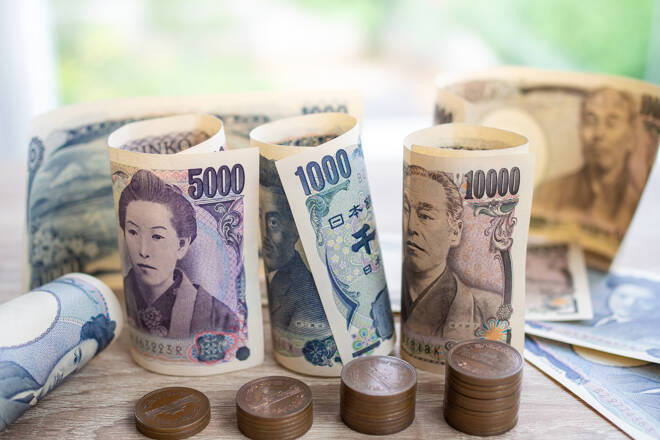Advertisement
Advertisement
USD/JPY Forecast: Tokyo Inflation and the Services PMI to Influence BoJ Pivot Bets
By:
Exploring how Tokyo inflation figures may sway the Bank of Japan's stance on negative rates as the markets bet on a Q1 2024 Fed rate cut.
Highlights
- The USD/JPY gained by 0.31% on Monday, ending the session at 147.205.
- On Tuesday, Tokyo inflation and Japan Services PMIs will draw early investor interest.
- Later today, US ISM Non-Manufacturing PMI and JOLTs Job Openings will be focal points.
USD/JPY Movements on Monday
The USD/JPY gained 0.31% on Monday. After a 0.97% slide on Friday, the USD/JPY ended the day at 147.205. The USD/JPY fell to a low of 146.226 before rising to a session high of 147.450.
Inflation and Services to Influence BoJ Pivot Bets
On Tuesday, Tokyo inflation figures for November could influence bets on a Bank of Japan pivot from negative rates. Sticky inflation would add more pressure on the BoJ to exit negative rates. In recent speeches, BoJ Board members have suggested monetary policy status quo. However, BoJ Governor Kazuo Ueda has also warned the BoJ does not need wage growth to materialize to make a move.
Economists forecast the annual rate of inflation to soften from 3.3% to 3.1% and core inflation to ease from 2.7% to 2.4%.
Investors must also consider the finalized Services PMI for November. The services sector accounts for about 70% of the economy and 75% of the workforce. An upward revision to the preliminary numbers would drive buyer demand for the Yen. However, investors must consider sub-components, including prices and employment.
According to the preliminary survey, the Services PMI increased from 51.6 to 51.7 in November.
US ISM Non-Manufacturing PMI and JOLTs Job Openings in the Spotlight
On Tuesday, US services sector PMIs and the labor market are in focus. A pickup in service sector activity and a modest fall in Job Openings could test bets on a Q1 2024 Fed rate cut.
The services sector contributes over 70% to the US economy and is the driving force behind inflation. Better-than-expected numbers would support the labor market, wage growth, and inflation. A tight US labor market could also support wage growth and disposable income. An upward trend in disposable income could fuel consumer spending and demand-driven inflation.
Economists forecast job openings to fall from 9.553 million to 9.350 million. Investors must also consider quit rates. A lower quit rate would signal weakening confidence in labor market conditions. Significantly, economists expect the ISM Non-Manufacturing PMI to increase from 51.8 to 52.0. However, the employment and price components also need consideration.
Short-term Forecast
Near-term USD/JPY trends will depend on the US ISM Non-Manufacturing PMI and Jobs Report (Fri). Rising bets on a Q1 2024 rate cut would support the USD/JPY move to 145. Sticky Tokyo inflation and increasing Japanese household spending (Fri) could pressure the BoJ into a pivot from negative rates.
USD/JPY Price Action
Daily Chart
The USD/JPY remained below the 50-day EMA while holding above the 200-day, affirming bearish near-term but bullish longer-term price signals.
A USD/JPY move above 147.500 would give the bulls a run at the 148.405 resistance level and the 50-day EMA.
Tokyo inflation, service sector PMIs, and the US JOLTs Job Openings will be the focal points.
However, a drop below the trend line and the 146.649 support level would support a fall toward the 144.713 support level.
The 14-day RSI at 39.35 indicates a USD/JPY fall through the trend line and the 146.649 support level before entering oversold territory.
4-Hourly Chart
The USD/JPY remained below the 50-day and 200-day EMAs, affirming bearish near-term price signals.
A USD/JPY return to 147.500 would support a move toward the 50-day EMA and the 148.405 resistance level.
However, a break below the trend line and the 146.649 support level would bring the 145 handle into play.
The 14-period 4-hour RSI at 44.60 indicates a USD/JPY fall through the 146 handle before entering oversold territory.
About the Author
Bob Masonauthor
With over 28 years of experience in the financial industry, Bob has worked with various global rating agencies and multinational banks. Currently he is covering currencies, commodities, alternative asset classes and global equities, focusing mostly on European and Asian markets.
Did you find this article useful?
Latest news and analysis
Advertisement
